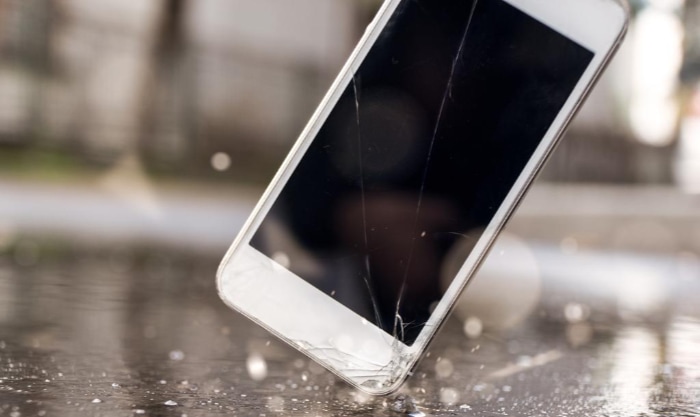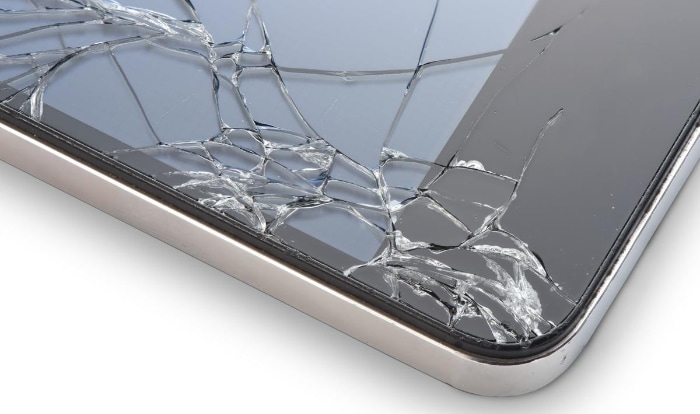Phone Screen Repair: How Long Will It Take?

Phone screens have become the windows to our digital worlds. From scrolling through social media feeds to answering important work emails, a functional phone screen is crucial to our daily tasks.
However, accidents happen, and the dreaded sight of a cracked or malfunctioning screen can be both a visual and functional inconvenience. Understanding the repair process, especially the time it takes, can help smartphone users manage their expectations and reduce the disruption to their lives.
Types of Screen Damages
Every smartphone user dreads the moment they might drop their device or notice an unexplained blemish on their screen. While phone screens are designed to be tough, they’re not impervious to damages.
It’s essential to understand the different types of screen damages, as each has its own implications for the repair process.
Superficial Scratches
Superficial scratches are minor blemishes on the screen’s surface. Often, they don’t affect the phone’s functionality and are primarily cosmetic concerns.
These are usually caused by everyday wear and tear, such as placing the phone in a pocket with keys or accidentally brushing it against a rough surface.
Deep Scratches
Unlike superficial ones, deep scratches can be felt if you run your fingertip over them. They penetrate further into the screen’s surface and may sometimes cause minor glitches with touch sensitivity.
These scratches often result from more significant impacts or repeated friction against sharp objects.
Cracked Screen
When a phone takes a hard fall or is subjected to significant pressure, the result might be a cracked screen. A cracked screen is characterized by distinct lines running across the display.
Depending on the severity, a crack might or might not interfere with the screen’s display or touch functionality.
Shattered Screen
The most severe form of screen damage is a shattered screen. This occurs when the phone undergoes extreme trauma, causing the screen to break into multiple pieces.
With a shattered screen, the phone often becomes unusable due to the risk of injury from sharp glass pieces and significant disruption to the display and touch functions.
Display Problems
Sometimes, the damage might not be visible externally, but the screen may start showing colors inaccurately, have dead pixels, or become unresponsive to touch. Such problems often indicate internal damages, possibly to the screen’s LCD or digitizer.
Factors That Affect Repair Time
When facing the inconvenience of a damaged phone screen, one of the foremost concerns is the repair duration. Knowing what to expect can help in planning and reducing downtime.
Several factors come into play when determining how long it will take to repair a phone screen, and here’s a closer look at some of them.
Severity of the Damage
The extent of the screen’s damage is vital to the repair timeline. For instance, superficial scratches might require a quick fix or polish, whereas shattered screens often demand comprehensive replacements, consuming more time.
Model & Brand of the Phone
Different phone models have unique specifications and components. Some brands or models might have readily available parts, while others might require special orders.
The accessibility and complexity of a particular phone model can significantly impact the repair duration.
Availability of Parts
If a repair shop has the necessary parts on hand, the repair process can commence immediately. On the contrary, waiting for specific parts to be ordered and delivered can extend the repair time considerably.
Technician’s Expertise
The skills and experience of the technician can drastically influence the repair speed. While an adept technician might swiftly address common damages, a less experienced one might need to proceed cautiously, extending the duration of the repair.
Method of Repair
The approach to fixing the screen can also affect the timeline. Opting for a DIY repair using a home kit might seem faster, but it carries the risk of potential errors.
In contrast, professional services, armed with the right tools and expertise, might offer a balance between speed and quality.
Location and Setting
The setting in which the repair happens matters. Walk-in services at physical stores might offer same-day repairs, but mail-in services, which require shipping the phone to a repair center, naturally have longer turnaround times due to transit.
Typical Repair Time Estimates
One of the pressing questions after a phone screen damage is, “How long will the repair take?” While the answer can vary based on multiple factors, having a ballpark estimate can help users manage their schedules and minimize inconvenience.
DIY (Do It Yourself)
Venturing into the realm of self-repair can be a time-saving option for those who have a knack for it. With the right tools and a good guide, fixing superficial scratches or even replacing a screen can take anywhere from 30 minutes to a few hours.
However, it’s crucial to account for the potential learning curve, especially for those new to such endeavors.
Professional In-Store Service
For many, the assurance of a professional touch is irreplaceable. When visiting a reputable repair store, users can often expect:
- Superficial scratch repairs: 20 minutes to an hour.
- Deep scratch repairs or minor cracks: 1 to 2 hours.
- Comprehensive screen replacement for major cracks or shatters: 2 to 4 hours.
However, these times can vary based on the technician’s workload, the store’s customer volume, and the complexity of the specific repair.
Mail-In Service
Opting to mail the phone to a dedicated repair center is another viable choice, especially when dealing with specialized or rare models. While the actual repair might fall within the time frames of in-store services, users need to factor in the shipping durations:
- Sending the phone to the center: 2 to 5 business days, depending on the location and shipping option.
- Repair time at the center: Typically 1 to 3 days.
- Return shipping to the user: Another 2 to 5 business days.
So, while the repair quality of mail-in services can be top-notch, the overall process might take anywhere from a week to two weeks, mainly driven by transit times.
Cost Implications

The financial aspect of repairing a phone screen can sometimes be as distressing as the damage itself. Beyond the mere act of fixing, several elements can impact the overall cost.
By exploring these factors, users can better anticipate the potential expenses and ensure they receive value for their money.
Severity of the Damage
Naturally, the damage’s extent directly correlates with the repair cost. Minor blemishes or scratches might only need some polishing or protective layers, which are relatively inexpensive.
In contrast, a complete screen replacement, necessitated by significant cracks or shattering, will invariably be pricier.
Model & Brand of the Phone
Certain high-end or newer models might come with higher repair costs due to the exclusivity or the sophistication of their components. In contrast, older models or more commonly-used phones might have more affordable replacement parts available.
Availability of Parts
A direct relationship exists between the cost and the availability of necessary parts. If a part is rare or has to be specially ordered, it could drive up the repair price.
Conversely, commonly stocked parts might lead to a more budget-friendly repair.
Technician’s Expertise
Quality comes at a price. Technicians with a proven track record and a wealth of experience might charge a premium for their services.
While their expertise can ensure top-notch repair, it’s essential to weigh their fees against the potential longevity and quality of the repair.
Method of Repair
DIY repairs can seem like a cost-effective solution, primarily because users save on labor charges. However, there’s a catch. The need for specialized tools or potential errors, which might lead to further damages, can offset initial savings.
On the other hand, though possibly pricier upfront, professional services offer the reassurance of a job well done, often accompanied by warranties.
Location and Setting
Urban centers or upscale neighborhoods might have repair shops that charge a premium due to higher operational costs or perceived value. On the flip side, mail-in services, though possibly economical in terms of repair charges, might have additional costs associated with shipping and insurance.
Choosing the Right Repair Option
When faced with a damaged phone screen, navigating the myriad of repair options can feel overwhelming. Each method comes with its set of advantages and potential drawbacks.
To simplify the decision-making process, it’s essential to understand the key repair avenues available and what they offer.
DIY (Do It Yourself)
The allure of fixing things on one’s own has gained traction with the widespread availability of repair kits and online tutorials.
Pros:
- Potentially cost-effective as labor charges are eliminated.
- Immediate commencement of repair without waiting on a technician’s availability.
Cons:
- Risk of further damaging the phone due to inexperience.
- Lack of warranty or guarantee on the repair work.
- Upfront investment in tools or kits, especially if they aren’t already on hand.
Professional In-Store Service
Visiting a brick-and-mortar repair shop can offer the assurance of expertise and often, quicker turnaround times.
Pros:
- Expertise ensures the job is done right.
- Physical inspection can provide accurate diagnoses and cost estimates.
- Most established shops offer warranties on their repairs.
Cons:
- Potentially higher costs due to labor and operational overheads.
- Waiting times, especially if the store is busy or parts need ordering.
Mail-In Service
For those who don’t have immediate access to a reliable repair shop, mailing the phone to a dedicated service center is a viable option.
Pros:
- Ideal for specialized or less common phone models that local shops might not handle.
- Some mail-in services offer competitive pricing due to centralized operations.
Cons:
- Longer turnaround times, primarily due to shipping durations.
- Potential risks associated with shipping, such as loss or damage during transit.
Insurance and Warranty
Before opting for any of the above, it’s vital to check the phone’s warranty status and any insurance policies in place.
Pros:
- Some warranties or insurance plans cover damages, reducing out-of-pocket expenses.
- Assurance of quality repair, especially if done by the manufacturer or an authorized center.
Cons:
- Warranty might become void if unauthorized repairs are done elsewhere.
- Insurance claims might come with deductibles or affect future premium rates.
Conclusion
Phone screen damages can disrupt our daily routines, but many repair options ensure we’re never disconnected for too long. Each choice brings unique benefits and considerations, whether it’s a DIY fix, a visit to a local store, or mailing the phone to a specialized center.
Weighing these against personal preferences, budget, and the screen’s damage level can guide users to the most suitable solution.


